
An obese 16-year-old girl has been depressed about a slowly progressive skin eruption on her chest and back for a year.


An obese 16-year-old girl has been depressed about a slowly progressive skin eruption on her chest and back for a year.
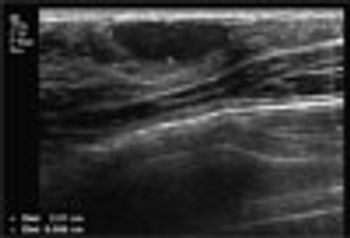
A 16-year-old girl has had a left breast lump for 6 months that recently became tender. Except for several small nodules in both breasts and tenderness of the lateral left breast, physical findings are normal and the patient is otherwise healthy.

A 4-year-old boy with a history of autism presents to his pediatrician’s office with a complaint of right leg pain. He is presumed to have pulled a muscle; an elastic bandage is applied and he is given ibuprofen. Over the next few days, he begins falling and tripping and is unable to maintain his balance. At a return visit, the patient’s mother says her son’s right leg is “like Jell-O” and that he appears to be dragging the leg.

A 7-year-old African American girl presented with an asymptomatic gray lesion beneath her right eye that had appeared before her first birthday. She was a healthy child with macular gray discoloration on the right infraorbital skin. There was no abnormal pigment noted on the conjunctiva.

A 12-year-old girl presented to the emergency department with progressing generalized inflammatory symptoms (fever and malaise), visual difficulty, severe inspiratory dyspnea, and 2 painless lesions on the right upper lip that had persisted for a few days. She had been well until 2 days before presentation, when she noticed a small pimple-like lesion above the right upper lip that was followed rapidly by facial edema, erythema, and constitutional symptoms.

Baby girl born at 37 weeks’ gestation to a gravida 2 para 1, 25-year-old mother by spontaneous vaginal delivery. Apgar scores, 8 at both 1 and 5 minutes. Placenta grossly normal with a 3-vessel cord. Prenatal course uncomplicated. Mother’s blood type, A-positive. Results of prenatal testing negative for hepatitis, syphilis, rubella, group B streptococcal disease, and HIV infection. No significant maternal or family history.

Most children who present with undifferentiated rash and fever-or fever and rash and nonspecific physical findings-have a benign viral illness. However, identifying those few who have an early or atypical presentation of a more serious disease is vitally important. Here-clues that can help.
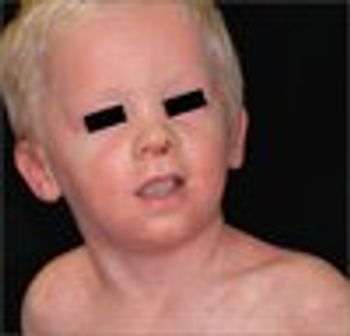
A papulosquamous rash spread from this boy’s head and neck to cover most of his body; however, areas on his trunk were spared.
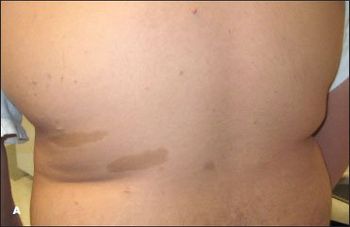
A 16-year-old boy presented for evaluation of his worsening behavior at school. He was very hyperactive and had difficulty in paying attention. He had always required help with reading and language. Maternal pregnancy and birth history were unremarkable.
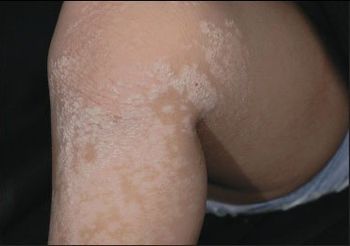
This 11-year-old girl has had an intensely itchy rash on her left leg for the past 10 years. It has been slowly progressing, to the point that it now extends the entire length of the leg. She has become extremely frustrated by the recurring bouts of itchiness and is desperate for relief.

Obstructive sleep apnea (OSA) has a high prevalence in the pediatric population and is associated with significant morbidity, both physical and in the realms of development, cognition, behavior, and school performance.

A 16-year-old girl presented to the emergency department (ED) with an anaphylactic reaction to a bee sting on the right side of her neck. Within 15 minutes of her arrival, swelling, numbness, and pain developed at this site. She also had headache, shortness of breath, and vague abdominal pain associated with nausea.
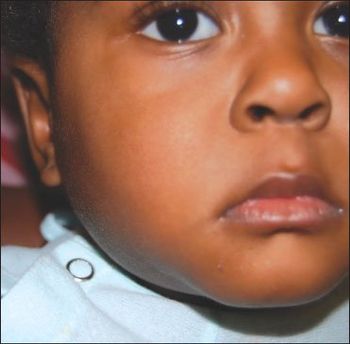
A 20-month-old boy brought to the emergency department with swelling on the right side of the neck and fever (temperature, 39.3°C [102.7°F]) of 1 day’s duration. The parents reported that the child had had intermittent fevers and poor weight gain for the past 3 months but no vomiting, diarrhea, rash, drooling, or difficulty in swallowing.

A 5-year-old boy has a total body, red, bumpy rash.

Children with psoriasis may be more prone to experiencing psychiatric disorders such as anxiety or depression, compared with young people who do not have the skin issue, new research indicates.
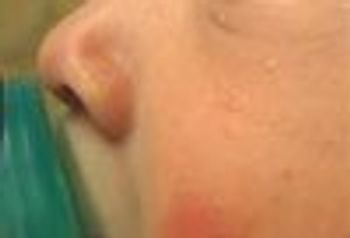
This asymptomatic swelling above a 3-month-old boy's left eyebrow had not changed since birth. The 15 × 13-mm, soft, nontender, freely mobile nodule had no punctum, hair tuft, or other skin anomaly. The infant was born at term and was otherwise healthy. At the parents' request, the nodule was excised without complications by a pediatric surgeon. Pathological findings showed lamellated keratin within the mass and surrounding pilosebaceous units opening into the mass, consistent with a dermoid cyst.
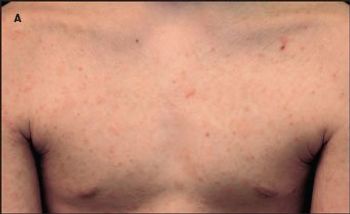
The conditions seen in these 3 photographs are easily confused. Can you match each picture with the correct diagnosis?

Allergy testing can aid the diagnosis of allergic disorders; however, it is not diagnostic. With skin testing, in particular, a positive result does not necessarily indicate clinical allergy, and a negative result does not always exclude clinical relevance.

The patient's mother says her child's brown spots have been present since the child was born.

A previously healthy 12-year-old boy presents to an emergency department with a chief complaint of fever and rash.
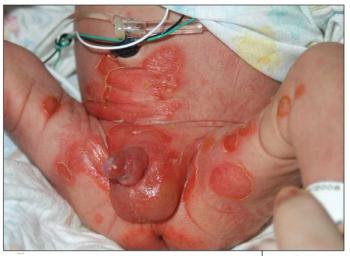
Bullous impetigo caused multiple areas of denuded skin, consisting of ruptured bullae with underlying erythema, on the face, lower abdomen, and thighs in this infant.

Type 1 diabetes mellitus (T1DM) is the most common type of diabetes encountered in children. The incidence of T1DM in children is increasing in some populations. Early recognition of symptoms of T1DM is critical to avoid life-threatening metabolic decompensation. Such symptoms can include polyuria, polydipsia, fatigue, weight loss, urinary tract infection, vaginal candidiasis, and “fruity” breath. In the presence of clinical symptoms of hyperglycemia, diagnosis requires just 1 laboratory blood glucose measurement above the established threshold for the child’s age. In the absence of typical symptoms, a second abnormal blood glucose measurement on a different day is needed.
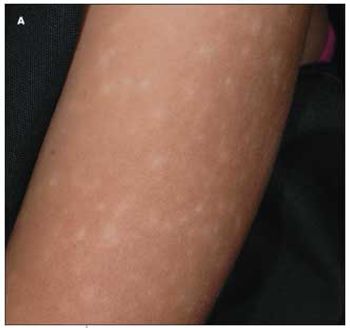
An 8-year-old girl presents with a 1-year history of the progressive development of multiple 5- to 8-mm hypopigmented macules all over her body. Her parents do not recall any other skin changes, and no other skin changes are evident on presentation.

A 3-month-old African American boy was referred for evaluation of poor weight gain and vomiting. The infant had been evaluated by his primary care physician 15 times within the past 6 weeks; he had no change in symptoms despite various treatments.

Selective IgA deficiency (SIGAD) is the most common immunodeficiency disorder; it affects about 1 in 200 to 900 persons. Most affected children are asymptomatic.